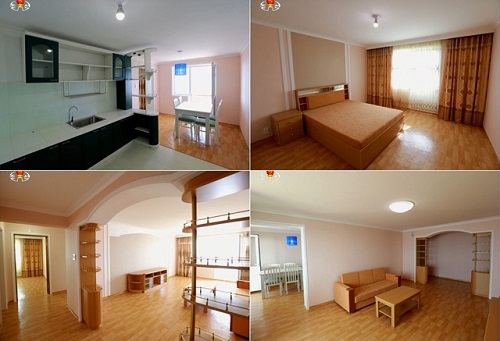In a sign of growing influence from South Korea, an increasing number of North Korea’s rich are remodeling their homes to match South Korean aesthetics. The troops mobilized for construction to complete and receive remuneration for such work belong to a special division tasked with building Kim Jong Un’s personal villas.
“Of late, more and more donjuLiterally "masters of money," donju refers to people who hav... More (North Korea’s newly affluent middle class) are remodeling their homes to reflect the South Korean style,” a source in South Pyongan Province reported in a telephone conversation with Daily NK on January 6. “This isn’t just restricted to Pyongyang, but is a trend that we see in other cities as well. DonjuLiterally "masters of money," donju refers to people who hav... More and Party cadres generally spend about 6,000 USD to hire expert construction teams who remodel the interiors of their homes.”
When asked what aspects of interior design receive the most attention, the source noted, “South Korean-style kitchens and living rooms in particular are rising in popularity.”
She added, “In Pyongyang, the donjuLiterally "masters of money," donju refers to people who hav... More and cadres consult with officers from units said to be famous for their construction skills: the 8th Bureau [part of the Ministry of People’s Security] and Guard Command. DonjuLiterally "masters of money," donju refers to people who hav... More and cadres who live in Pyongyang then hire active duty soldiers from these units. Those located outside Pyongyang don’t have access to the active duty soldiers, so they hire discharged soldiers. The officers from the units handle the materials and personnel, and consult with the homeowners to plan and deploy a group of three workers for a number of days to finish the job.”
Personnel from the Guard Command and the 8th Bureau have become known as the top builders of one-story villas in all of North Korea, and have constructed national buildings such as the Moranbong Grand Theater.
The troops from the Guard Command and 8th Bureau are usually engaged in construction projects ordered by Kim Jong Un. On the side, these troops subcontract remodeling projects from the donjuLiterally "masters of money," donju refers to people who hav... More and cadres, a trend reflecting the power of capitalism in today’s North Korea.
“The donjuLiterally "masters of money," donju refers to people who hav... More want superior craftsmanship and can afford to pay in foreign currency. They tend to employ the soldiers exclusively. In return, the mobilized troops execute the remodeling job to the homeowner’s exact specifications.” a source in North Pyongan Province explained.
There are South Korean interior design catalogs available for homeowners to pick out the exact features they desire. The builders then smuggle in the necessary supplies to match the client’s demands.
“Old-fashioned kitchens are being removed and more spacious living rooms are being installed. Built-in storage space for electric rice cookers and utensils are popular kitchen features. In the bedroom, double beds are being installed and old wardrobes are being replaced with built-in closets,” the North Pyongan Province-based source said when asked to describe some specific aspects of the renovations.
“Large aluminum frames are being used to switch out the windows, and ornate double-layered curtains are hung in front of the new windows. In the bathrooms, large mirrors are installed along with new toilets. There are even some devices available that detect the homeowner approaching and open the front door in advance.”
These types of renovations do not come cheap, costing far more than the average resident is able to afford, she continued, noting, “The materials for this kind of South Korean-style remodeling job cost about 4,000-5,000 USD, but when you factor in the cost of labor and lodging for the workers, the total price comes to about 6,000 USD. That means that the cost for this kind of interior design is more than the total price of an average single-story house in North Korea.”
As love for South Korea culture – known as Hallyu (or Korean Wave) – continues to thrive in North Korea, some members of the upper class are asking for their newly built homes to be outfitted entirely in the South Korean style.
A Pyongyang-based source added, “Some of the newly-built apartment buildings in Pyongyang elicit responses like, ‘Wow, it looks just like the kitchen I saw in a South Korean drama.’ The very fact that the donjuLiterally "masters of money," donju refers to people who hav... More and cadres are renovating their home interiors like this is indicative of South Korean influence.”



















